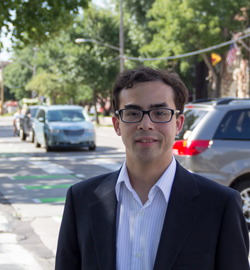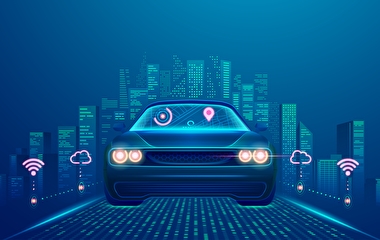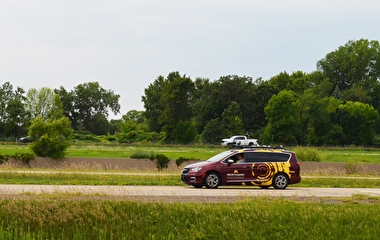The Department of Civil, Environmental, and Geo- Engineering (CEGE) has added an assistant professor with interests related to autonomous vehicles. Michael Levin received a doctorate in civil engineering from the University of Texas at Austin in May 2017; his dissertation was titled “Modeling and optimizing network infrastructure for autonomous vehicles.” Learn more about Levin’s interests below.
Tell us about your plans for research at the U of M.
I plan to focus my research on modeling the traffic flow and planning effects of emerging transportation technologies. New technologies, such as autonomous vehicles, are largely driven by developments in the software and hardware systems. Many questions remain on how they will affect the transportation network, traffic congestion, and our daily commute. City planners look at these questions 20 to 25 years into the future to design for future infrastructure needs. With the rapid advancement of automated vehicle technology, we need to research them now to be prepared for their availability in the near future.
What work are you doing in the area of autonomous vehicles?
I currently focus on two areas in autonomous vehicles. First is modeling and optimizing new traffic flow behaviors and controls—maneuvers autonomous vehicles can perform but human drivers can’t. For instance, traffic signals could be replaced with high-speed coordination of vehicles at intersections, and platoons of autonomous vehicles could travel nearly bumper to bumper at highway speeds. The second is studying new options for traveler mobility. Autonomous Uber could have similar costs to private vehicle ownership and operation; in that case, would households still choose to own vehicles? If mobility-on-demand becomes a major form of transportation, how do we match travelers to vehicles, and route vehicles to reduce traffic congestion?
What excites you most about your work?
The opportunity to shape the future of transportation. Ultimately, the models researchers develop will be used to design transportation infrastructure for autonomous vehicles. Since the first private automobiles, transportation engineering has focused on designing road systems for human-driven vehicles. Autonomous vehicles open up so many new possibilities, some of which we have yet to imagine. My work allows me to study new ways to use autonomous vehicle technologies to determine which ones are practical and effective at improving traffic.
What are the implications of your work?
Partially autonomous vehicles are already available to consumers (e.g., Teslas), and large-scale coordinated use could reduce the traffic congestion we experience in our daily commutes to work or school. Once fully autonomous vehicles become available, we could benefit from even larger improvements in traffic operations, but realizing these benefits requires engineering our transportation systems and controls to make use of these new technologies. Autonomous vehicles are likely to increase travel demand as well as the supply. The goal of my research is to learn how to use autonomous vehicles to reduce travel time and the environmental effects of transportation worldwide.




